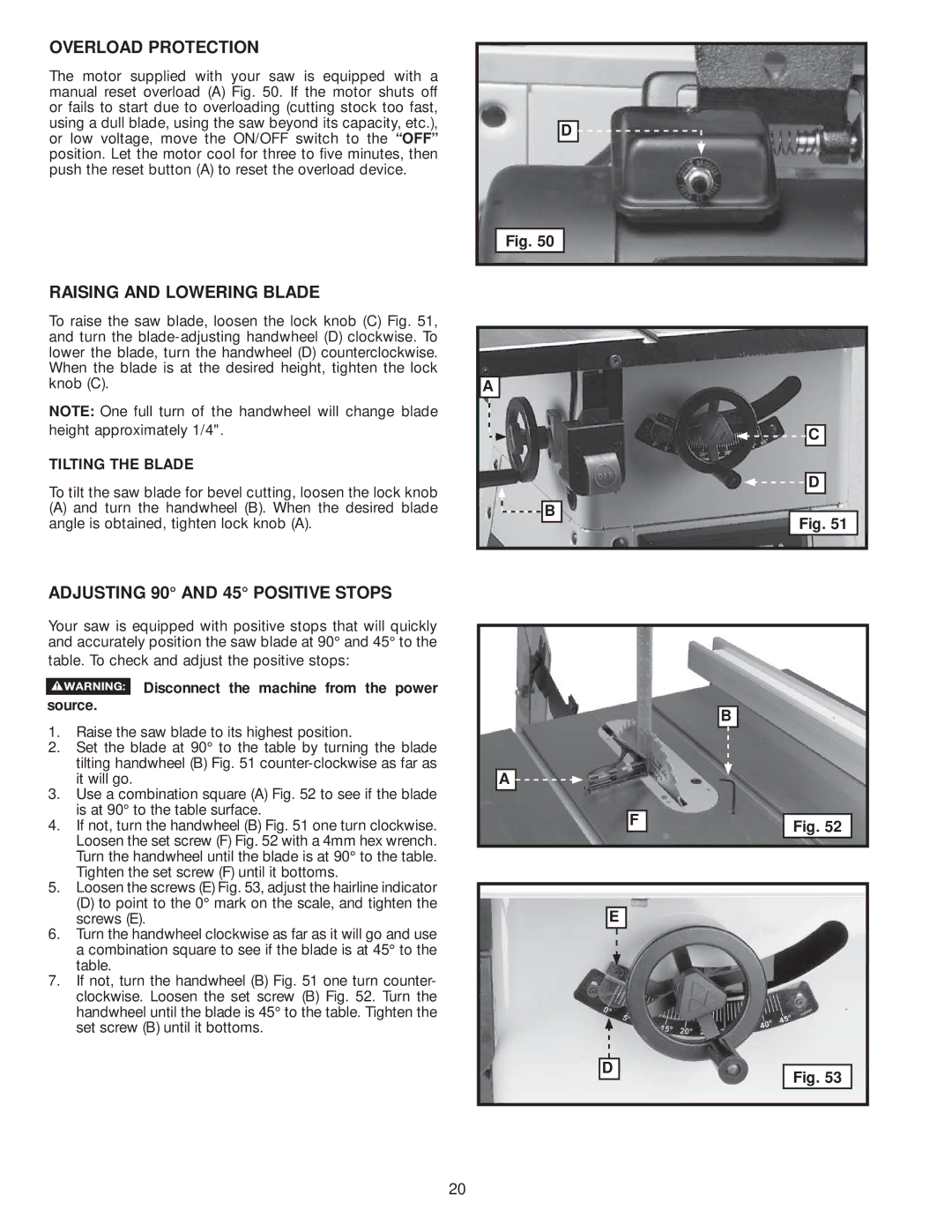
OVERLOAD PROTECTION
The motor supplied with your saw is equipped with a manual reset overload (A) Fig. 50. If the motor shuts off or fails to start due to overloading (cutting stock too fast, using a dull blade, using the saw beyond its capacity, etc.), or low voltage, move the ON/OFF switch to the “OFF” position. Let the motor cool for three to five minutes, then push the reset button (A) to reset the overload device.
D ![]()
Fig. 50
RAISING AND LOWERING BLADE
To raise the saw blade, loosen the lock knob (C) Fig. 51, and turn the
NOTE: One full turn of the handwheel will change blade height approximately 1/4".
TILTING THE BLADE
To tilt the saw blade for bevel cutting, loosen the lock knob
(A)and turn the handwheel (B). When the desired blade angle is obtained, tighten lock knob (A).
A
![]()
![]() B
B
![]()
![]() C
C
![]()
![]() D
D
Fig. 51
ADJUSTING 90° AND 45° POSITIVE STOPS
Your saw is equipped with positive stops that will quickly and accurately position the saw blade at 90° and 45° to the
table. To check and adjust the positive stops:





 Disconnect the machine from the power source.
Disconnect the machine from the power source.
1. | Raise the saw blade to its highest position. |
2. | Set the blade at 90° to the table by turning the blade |
| tilting handwheel (B) Fig. 51 |
| it will go. |
3. | Use a combination square (A) Fig. 52 to see if the blade |
| is at 90° to the table surface. |
4. | If not, turn the handwheel (B) Fig. 51 one turn clockwise. |
| Loosen the set screw (F) Fig. 52 with a 4mm hex wrench. |
| Turn the handwheel until the blade is at 90° to the table. |
| Tighten the set screw (F) until it bottoms. |
5. | Loosen the screws (E) Fig. 53, adjust the hairline indicator |
| (D) to point to the 0° mark on the scale, and tighten the |
A ![]()
![]()
F
B
Fig. 52
| screws (E). |
6. | Turn the handwheel clockwise as far as it will go and use |
| a combination square to see if the blade is at 45° to the |
| table. |
7. | If not, turn the handwheel (B) Fig. 51 one turn counter- |
| clockwise. Loosen the set screw (B) Fig. 52. Turn the |
| handwheel until the blade is 45° to the table. Tighten the |
| set screw (B) until it bottoms. |
E
D
Fig. 53
20
